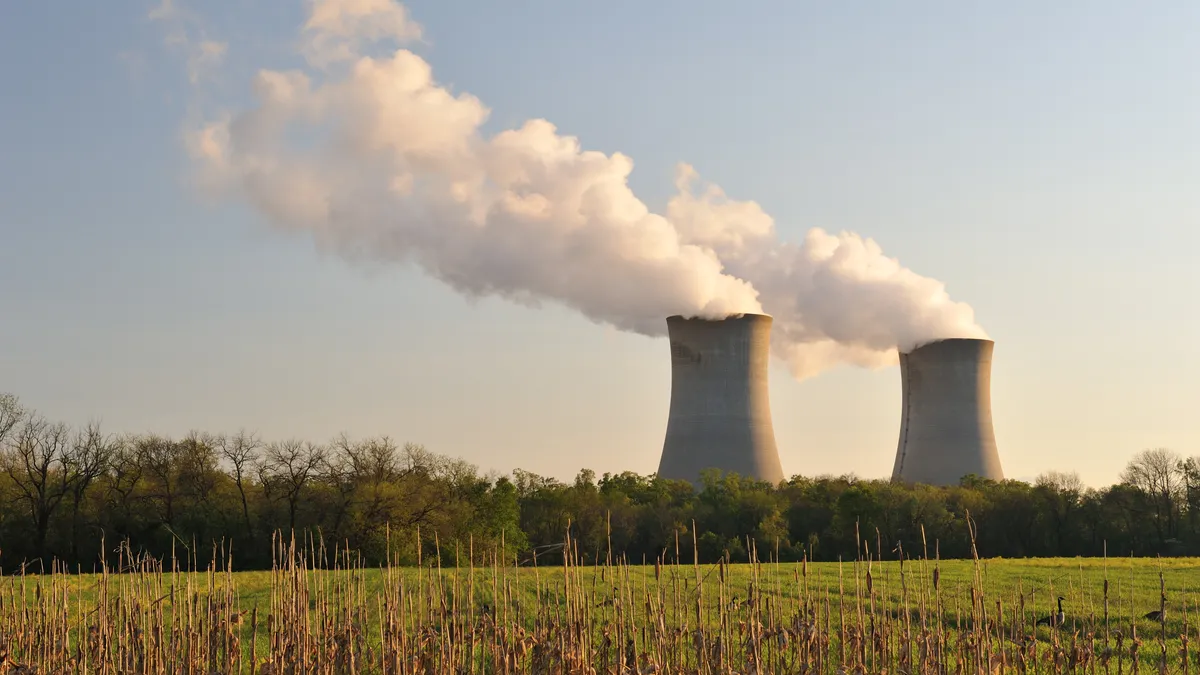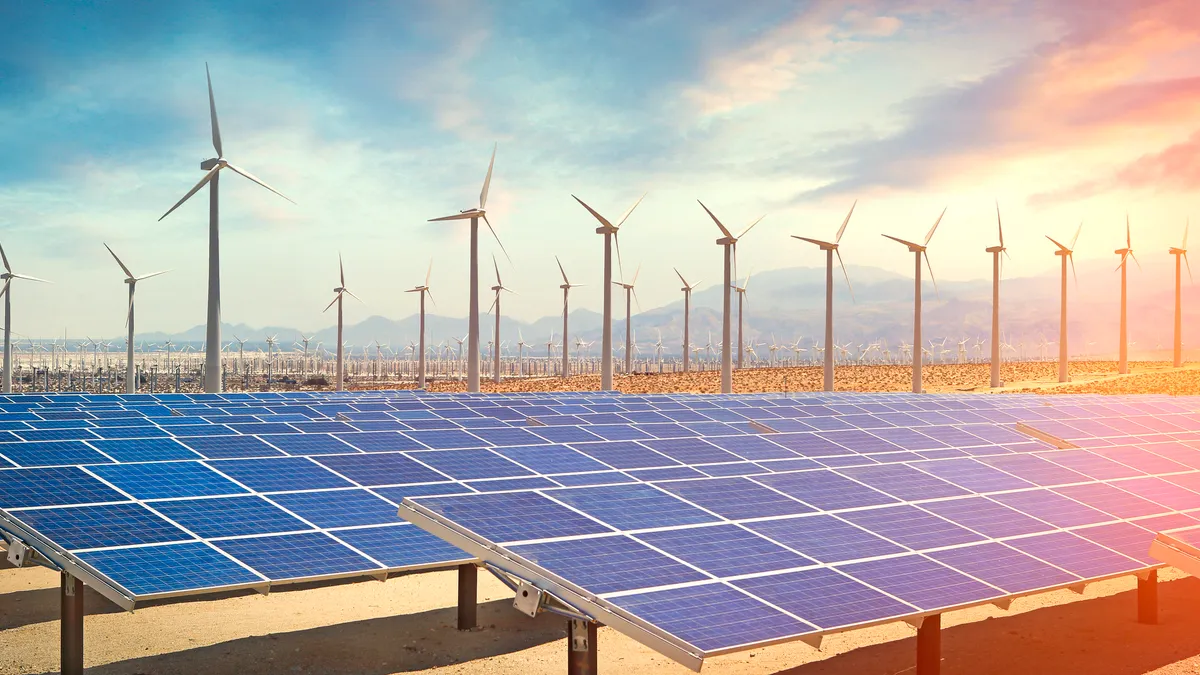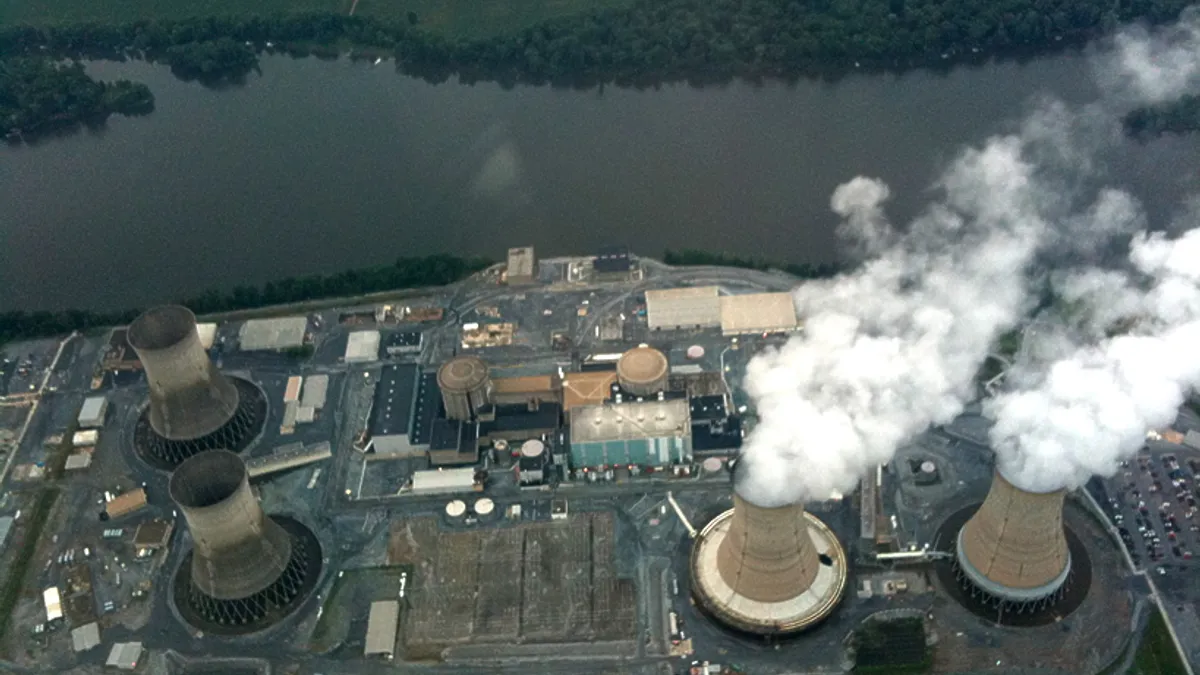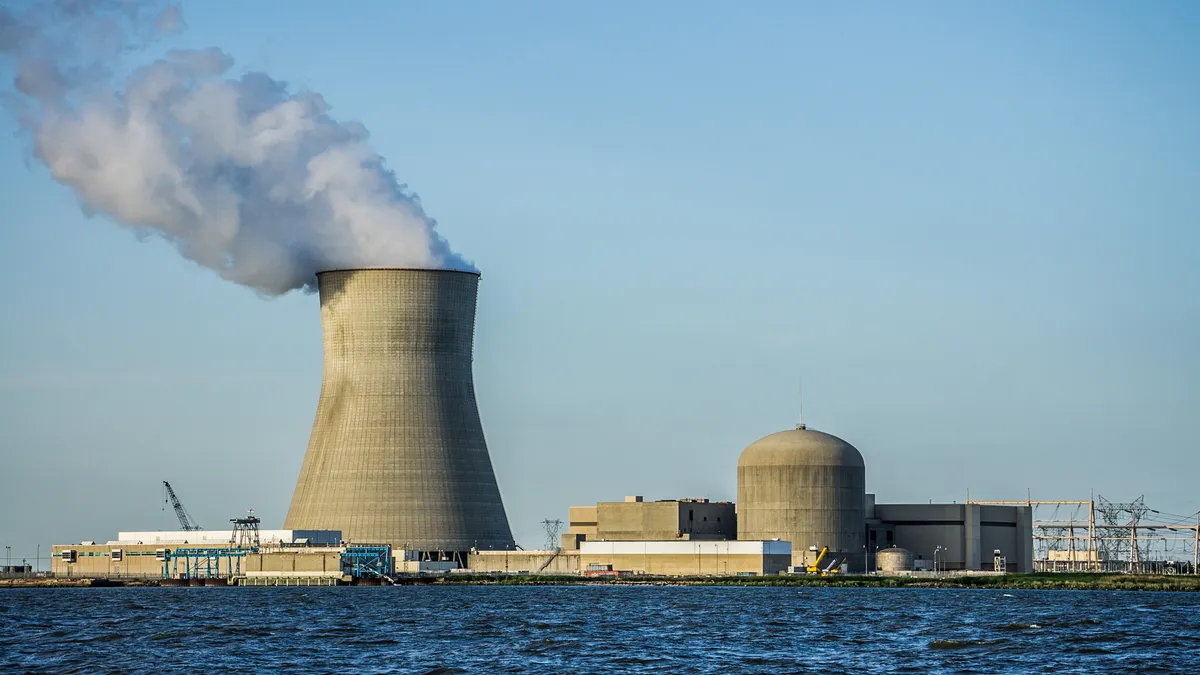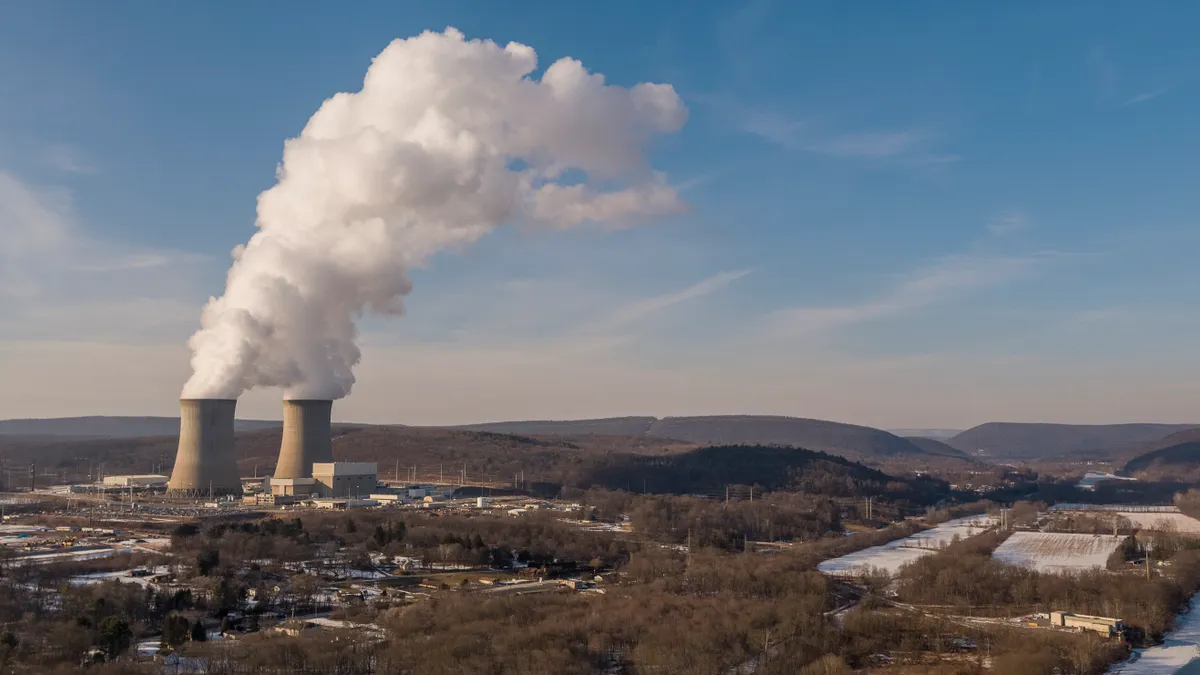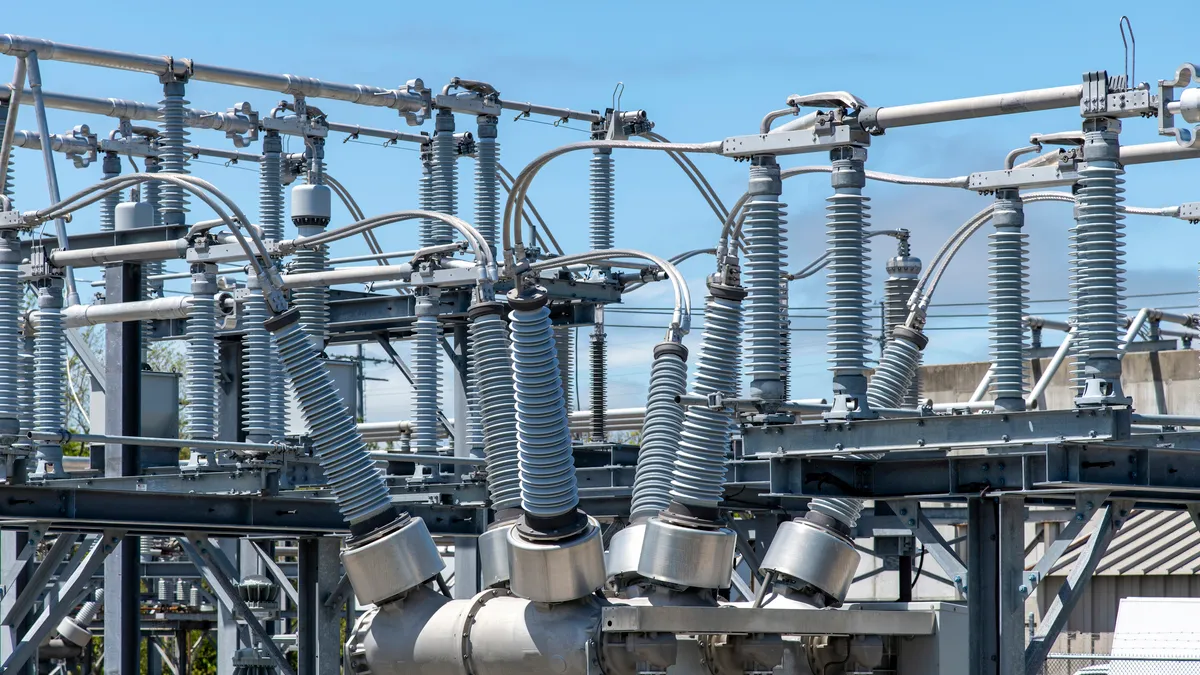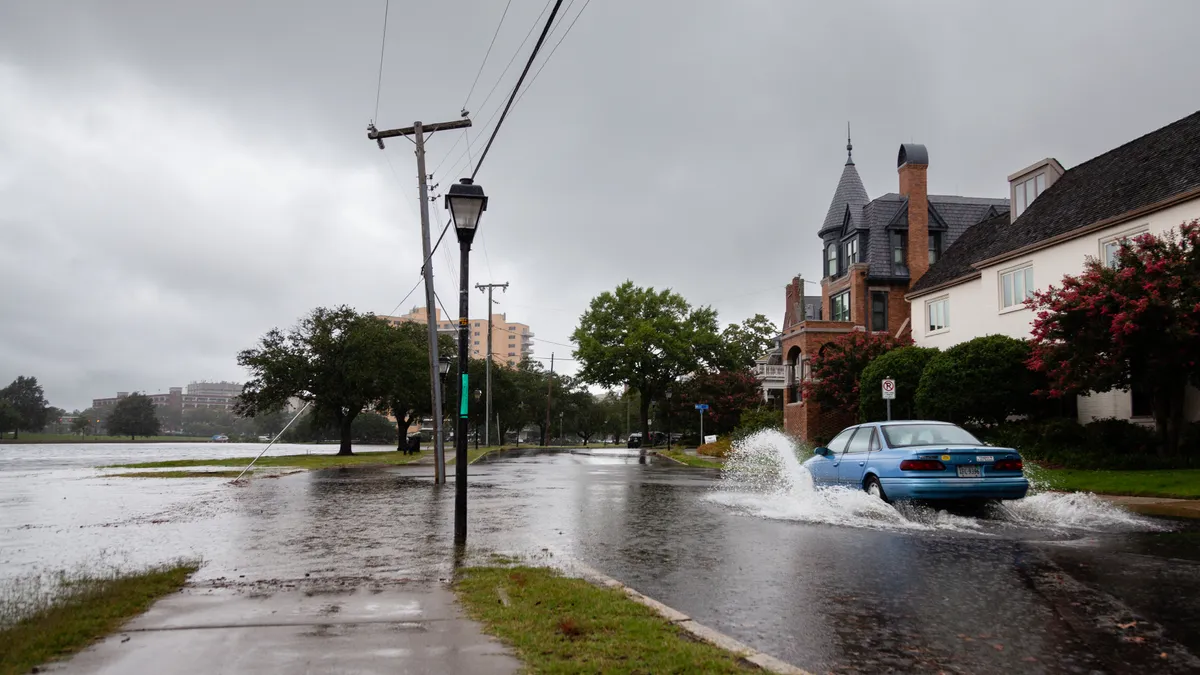Utilities' bullish investments in natural gas over the past several years may soon reach a tipping point, some analysts and clean energy groups say, though whether that plunge happens in 2020 remains to be seen.
The fuel has seen unprecedented growth in the last several years, driven by the U.S. shale boom that pushed domestic prices so low they began to undercut those of coal, nudging the resource out as the top U.S. electric power source in 2017.
Natural gas made up 37% of electric generation in 2019, and the U.S. Energy Information Administration predicts the fuel will remain steady -- hitting 38% in 2020 and going back to 37% in 2021.
As utilities face rapid coal retirements, many say natural gas is an obvious transition tool as more clean energy technology is added to power grids. Natural gas facilities are made for cycling on and off, unlike coal, which makes it an easier fuel to sync with more intermittent resources like wind and solar. It also emits up to 60% less carbon than coal, though it is a significant producer of methane, a potent greenhouse gas.
"I expect to see an increased level of scrutiny of proposals for new gas in the context of announced climate goals, both at state level and at the utility level."

Mark Dyson
Electricity Principal, RMI
"We see a really strong role for natural gas now and in the future," Natural Gas Supply Association Executive Vice President Patricia Jagtiani told Utility Dive. "Not only through the way it currently has contributed to reducing carbon emissions, but through its partnership with renewable energy, and how we work together to make each other more reliable and affordable."
But an increased push on climate and clean energy goals means more states, cities and utilities are aiming for carbon-free power mixes in the next few decades, and some industry observers worry utilities are over-purchasing on natural gas — and will soon be left with the same stranded asset burdens that now plague the coal industry.
"The big question is 'Will we now announce that the wave has broken?' And 'Could it happen as soon as this year?'" Karl Rábago, senior policy analyst at the Pace Law School's Energy and Climate Center, told Utility Dive.
Will natural gas go the way of coal?
Long-term utility planning has shifted in recent years away from coal-fired power and toward cheaper natural gas.
"A lot of the natural gas value chain is very long lived ... So as we continue to make investments in infrastructure, if there's a material change in demand, then the risk for stranded costs increases," Navigant Energy Partner Mark Eisenhower told Utility Dive. "I think it's something that the gas community, in particular utilities, are looking at and thinking through as they work on their strategic plans."
There are $70 billion worth of planned natural gas plants in the pipeline through 2025 and 90% of those investments are more expensive than clean energy portfolios, which include a combination of demand response, energy efficiency, storage and renewables, according to a September 2019 report from the Rocky Mountain Institute. Seventy percent of those investments will be rendered uneconomic by 2035, posing a serious question for investors and utilities about the prudence of some of those buildouts, and that question will only grow more urgent in 2020, according to the report's authors.
"I expect to see an increased level of scrutiny of proposals for new gas in the context of announced climate goals, both at state level and at the utility level," Mark Dyson, electricity principal at RMI and one of the report's authors, told Utility Dive.
Duke Energy and Dominion Energy are two utilities in particular that have been criticized for their long-term natural gas buildouts.
Duke has said that shortening the timeline for its payoff those investments is one potential path forward to avoid stranded asset risks. And Dominion recently suspended a request for proposals on 1,500 MW of peak natural gas capacity in its Virginia territory following reporting that the utility had been over-forecasting demand for years to justify its spending on infrastructure for the resource.
"I think the bigger picture thing for us is we are hoping that we see a trend toward more sustainable solutions to reducing carbon emissions. We see a lot of subsidies and gas bans that are honestly quite disruptive to the functioning of the market."

Patricia Jagtiani
Executive Vice President, Natural Gas Supply Association
Environmentalists say part of their 2020 strategy will be to fight these buildouts.
The Natural Resources Defense Council (NRDC) "has been devoting quite a bit of resources to fight back when utilities say that they need to build many new gigawatts of natural gas capacity … that they say are necessary to replace coal," Amanda Levin, policy analyst for the NRDC's Climate and Clean Energy Program, told Utility Dive. "We really want [utilities] to prove that there isn't a cleaner alternative available."
Dyson also expects questions to grow around who is absorbing the risks of these investments.
Minnesota regulators in September rejected Xcel Energy's proposal to purchase a 720 MW natural gas plant over concerns that the plant may close early and leave customers to pay the brunt of the bill. The plant will still be built, but through a utility subsidiary that ensures the cost of a facility isn't incorporated into regulated rates.
"The outcome was that the dereg[ulated] arm of the utility would be taking that risk instead," marking a shift in how investment risks related to gas are assessed and managed, said Dyson.
How will natural gas be valued?
Ultimately, the most policy and regulatory action on natural gas will likely come from states and markets, said stakeholders.
Wholesale power markets are in the midst of a resource tug-of-war based in part on state leadership frustrations with how power sources are prioritized and dispatched in power markets. That tension will continue in 2020, say stakeholders, as gas ultimately continues to make up a substantial portion of the country's electric power mix while demand for lower-emitting power rises.
"I think the bigger picture thing for us is we are hoping that we see a trend toward more sustainable solutions to reducing carbon emissions," said Jagtiani. "We see a lot of subsidies and gas bans that are honestly quite disruptive to the functioning of the market."
"The entire community in the natural gas value chain, from wellhead to burner tip … [has] been surprised at the speed at which the decarbonization debate is occurring in many states. It's been a dramatic shift in a very short period of time."

Mark Eisenhower
Energy Partner, Navigant
The Federal Energy Regulatory Commission handed fossil fuel interests a victory on that issue in December 2019, ruling in favor of the PJM Interconnection's proposed Minimum Offer Price Rule, which effectively raises the bid prices for all resources selling into the PJM market that receive a state-level subsidy. Though the gas industry sees the move as a win, those groups are still trying to parse through the long-term implications and believe the broader question of how to maintain a competitive power market will remain.
"We'll still continue to see that general issue, that tension between, ‘How do you mitigate state subsidies and maintain a competitive market?'" said Jagtiani.
Natural gas groups and analysts are keeping an eye on how market rules may be addressed in 2020.
For example, questions on resilience, largely kicked over to individual grid operators by FERC two years ago, will remain a key question that could impact the way resources are dispatched into power markets, said Jagtiani. And how those policies play out will have a major impact on infrastructure planning, including the necessity of building out mass pipelines.
National Grid placed a moratorium on natural gas hookups this year, in response to New York opposition to a pipeline buildout and officials in other states have disagreed with how federal regulators and markets are handling natural gas buildouts. Pipeline considerations may now be further complicated by a recent regulatory overhaul from the Trump Administration that removes words like "direct", "indirect" and "cumulative" from the federal environmental permitting language, which will likely lead to lengthy court battles over pipeline buildouts in 2020, according to clean energy advocates.
Demand for decarbonization
A dramatic change in resource demand is already underway with the significant decline in wind and solar prices. Once those prices begin to undercut the price of natural gas, utilities may see more demand for low-cost, zero-emission power, putting natural gas in a precarious spot, say stakeholders.
"The entire community in the natural gas value chain, from wellhead to burner tip … [has] been surprised at the speed at which the decarbonization debate is occurring in many states," said Eisenhower. "It's been a dramatic shift in a very short period of time."
Taking a hard look at these investments and these buildouts does not mean the fuel itself won't be needed in a high renewables future, said clean energy stakeholders, but rather that regulators and utilities should be more thoughtful in how they think about these investments. Natural gas is seen as a long-term decarbonization solution in a highly renewable grid, so investments should focus on getting to that higher penetration of renewables, rather than increasing the already-large share of gas on the grid, said Dyson.
"Most places, renewables still make a small fraction of the grid," he said. "Because of that, for the next five years, [investing in] renewables just make a lot more sense, and gas does not."
"Environmentalists and other advocates have broken from the tendency to go along with everything if they can get a coal plant shut down. I don't think settling for coal plant closures, no matter what the price, is on the table anymore."

Karl Rábago
Senior Policy Analyst, Pace Law School Energy and Climate Center
Ultimately, natural gas interests want a larger role in discussions surrounding decarbonization goals in 2020, and how they can be included in the long-term strategy.
"I think what we're seeing with our [natural gas] clients is they want to be engaged in that dialogue with the policymakers," said Eisenhower. "The implication in 2020 is a very robust debate about policy and the structures required to help the natural gas industry complement what we're trying to do with our decarbonization goals."
For climate activists, coal retirements have remained the key target for a while, but that narrative has begun to shift as well — away from shutting down all the coal possible and toward a broader decarbonization strategy focused on replacing coal-fired power with less gas and more clean energy technologies.
"Environmentalists and other advocates have broken from the tendency to go along with everything if they can get a coal plant shut down," said Rábago. "I don't think settling for coal plant closures, no matter what the price, is on the table anymore."
The natural gas industry sees itself able to participate through longer-term technology solutions that likely won't mature this year, but that the sector continues to pursue. Those technologies include a transition toward biofuels and hydrogen, which would elongate the lifespan for some critical gas infrastructure.
"There's a lot of work to be done to analyze how you can utilize the existing infrastructure in the future and still meet decarbonization goals," said Eisenhower. "And that could include a number of current technologies and emerging technologies … but at the end of the day, it's important that we have the natural gas infrastructure for resiliency, security of supply, and how that ultimately fits with a lower-carbon energy system."





